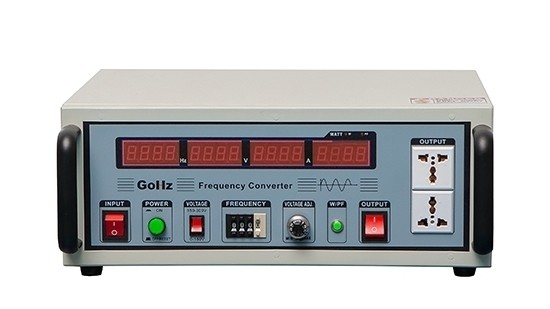Single-Phase Converters: Enabling Single-Phase Load and Motor Operation from Three-Phase Supplies

In industrial and commercial electrical systems, three-phase power is the standard for its efficiency in powering heavy machinery and motors. However, a persistent need exists to operate single-phase loads, particularly motors, from these three-phase distributions. Single-Phase Converters are specialized power electronic or electromechanical devices designed to address this incompatibility. This article provides a technical examination of the operational principles, primary topologies, and critical application considerations for these essential phase-conversion systems.
1. The Fundamental Phase Conversion Challenge
Three-phase power systems deliver three alternating currents, each out of phase by 120 degrees, providing a constant power transfer and enabling the efficient operation of robust three-phase induction motors. The challenge arises when only a three-phase supply is available, but the equipment requiring power is single-phase. This scenario is common when:
Retrofitting a single-phase machine into an existing industrial facility with only three-phase distribution.
Operating auxiliary equipment (e.g., lighting, small tools) in a three-phase environment.
Powering legacy single-phase motors that are integral to a process.
Directly connecting a single-phase load to two legs of a three-phase supply is not recommended, as it can cause a phase imbalance, potentially leading to inefficient operation, overheating of the three-phase transformer, and nuisance tripping of protective devices. A Single-Phase Converter solves this by creating a derived or synthesized third leg to enable the operation of three-phase equipment from a single-phase source, or by providing a dedicated, stable single-phase output.
2. Operational Principles and Primary Topologies
The term "Single-Phase Converter" encompasses several distinct technologies, each with a different operating principle and application target. The two most common categories are Phase Converters (for running three-phase motors from single-phase power) and Solid-State Converters (for providing a clean single-phase output).
2.1. Rotary Phase Converters (RPCs)
An RPC is an electromechanical device that generates a three-phase output from a single-phase input.
Principle: It uses an idler motor—a three-phase motor that is not connected to a mechanical load. The single-phase power is connected to two of the idler motor's terminals. As the motor spins, it generates a voltage on the third terminal through electromagnetic induction, creating a derived third phase.
Output: The output is a three-phase system where the generated leg (the "manufactured" phase) typically has a different voltage and phase angle than the utility-supplied legs. While sufficient for starting and running many three-phase motors, the voltage imbalance can reduce motor efficiency and torque, and may not be suitable for sensitive electronics.
2.2. Static Phase Converters
Principle: A static converter is a non-rotating device that uses capacitors and often a start circuit to create a phase shift, enabling a three-phase motor to start and run from a single-phase supply. However, it only provides true three-phase power during the motor's starting sequence. Once running, the motor continues operating on the single-phase input, effectively derating it and causing it to run at higher temperatures.
Application: Primarily used for applications with low starting torque requirements and intermittent duty cycles.
2.3. Solid-State Inverter-Based Converters
This is the most advanced and versatile topology, often referred to simply as a Frequency Drive or AC-DC-AC Converter when used for this purpose.
Principle: The single-phase AC input is first rectified to DC. A capacitor bank stabilizes the DC bus. Then, a sophisticated inverter stage using IGBTs synthesizes a new, perfectly balanced three-phase AC output with controllable voltage and frequency (VFD functionality) or a clean, regulated single-phase output.
Advantages: This method provides a high-quality, balanced output suitable for sensitive equipment, offers soft-start capabilities, and allows for precise speed control of motors. It is the preferred solution for modern applications requiring performance and reliability.
3. Key Application Considerations and Selection Criteria
Selecting the appropriate converter technology requires a detailed analysis of the load and system requirements:
Load Type: Is the load a motor, a sensitive electronic load, or a general lighting/heating circuit?
Motor Starting Torque: RPCs and VFDs are better for high starting torque applications.
Sensitive Electronics: Only solid-state inverters provide a clean, stable output free from voltage imbalances or waveform distortion.
Power Rating (kW/HP):The converter must be sized to handle the inrush current and the continuous full-load current of the connected equipment.
Duty Cycle:Is the application continuous or intermittent? Static converters are only suitable for light, intermittent use.
Efficiency:Solid-state converters generally offer higher full-load efficiency compared to RPCs, which have losses associated with the idler motor.
Control Requirements: If variable speed control of a motor is needed, a solid-state inverter (VFD) with single-phase input/three-phase output is the only integrated solution.
4. Primary Application Domains
Single-Phase Converters are deployed across various sectors:
Industrial Workshops: Enabling the operation of three-phase machine tools (lathes, mills, drills) in small shops or rural areas with only single-phase utility service.
Agricultural Operations: Powering three-phase irrigation pumps, grain augers, and compressors from a single-phase source.
HVAC and Refrigeration: Running three-phase compressors and condenser fans in locations without three-phase infrastructure.
Laboratory and Testing Environments:Providing precise and stable single or three-phase power for test benches from whatever mains supply is available.
5. Conclusion
Single-Phase Converters are critical enablers of electrical compatibility, bridging the gap between the ubiquitous single-phase power available in many locations and the demanding requirements of three-phase industrial equipment, particularly motors. The evolution from simple capacitor-based static converters and electromechanical RPCs to advanced solid-state inverters reflects a continuous pursuit of efficiency, power quality, and operational control. The selection of the correct converter topology is a critical engineering decision, directly impacting system performance, reliability, and the longevity of the connected load. As industrial automation advances, the role of sophisticated solid-state converters in providing flexible and high-fidelity power solutions continues to grow in importance.

Leave a comment